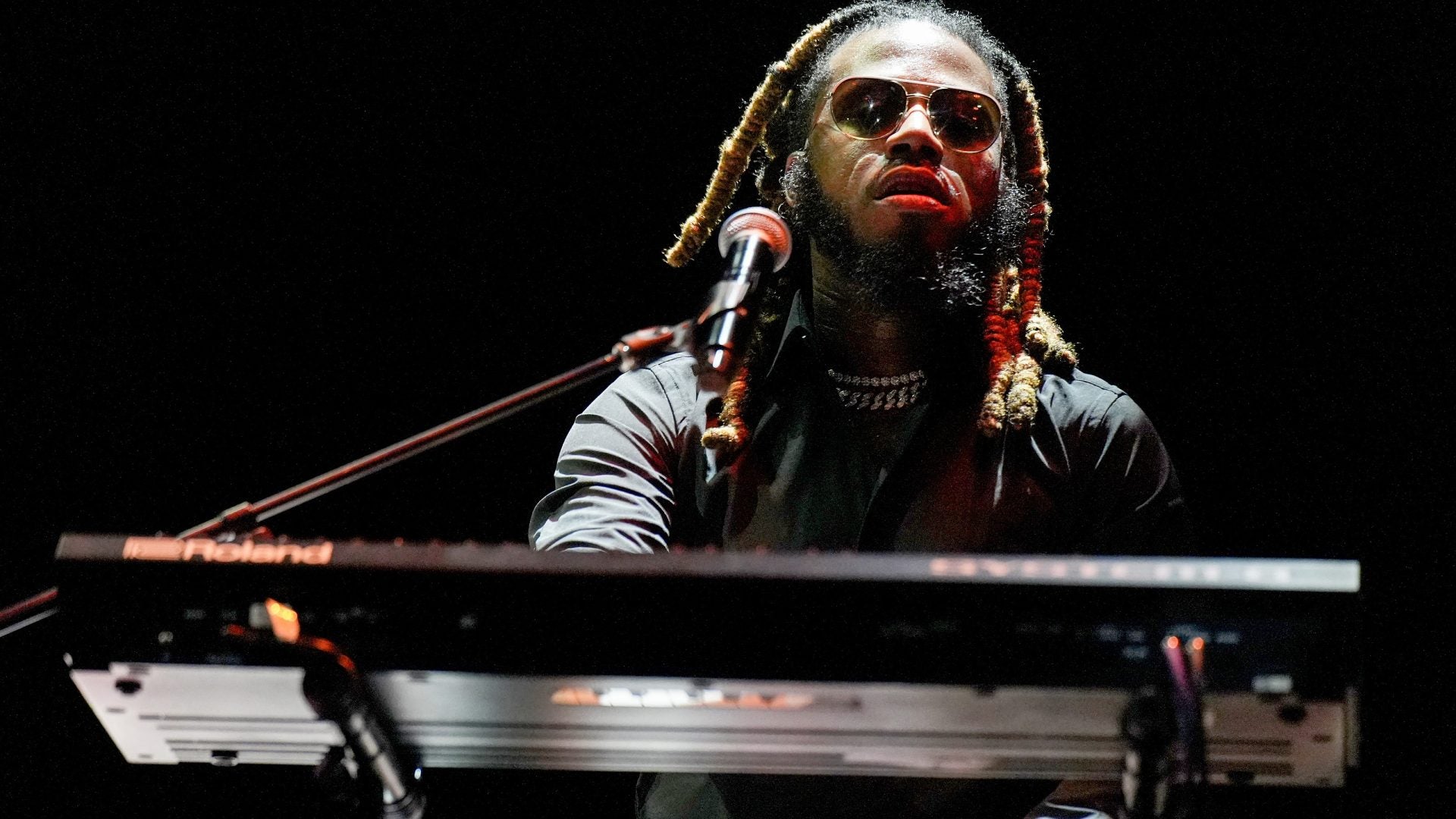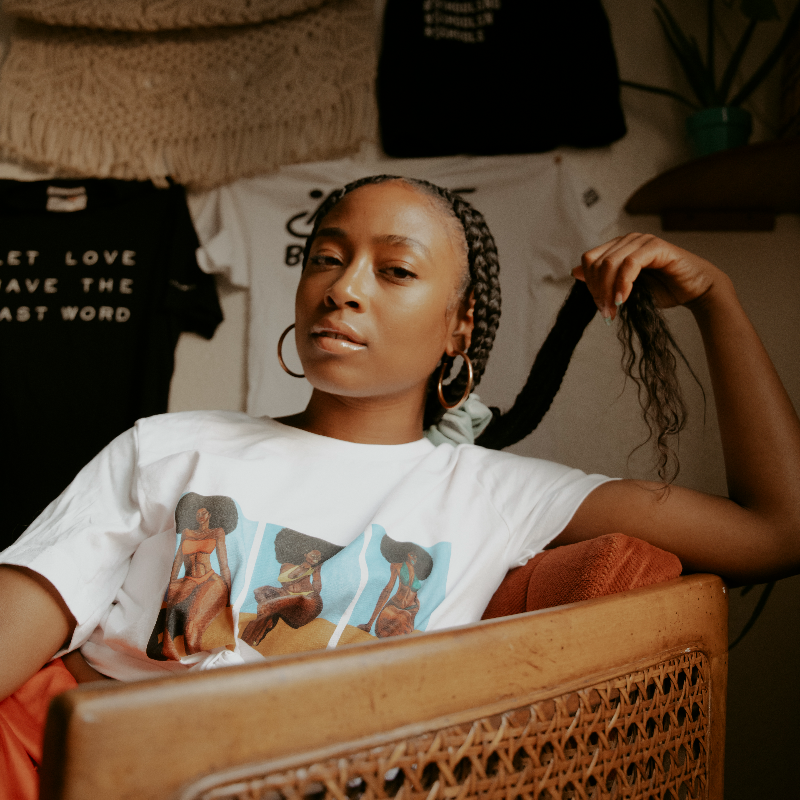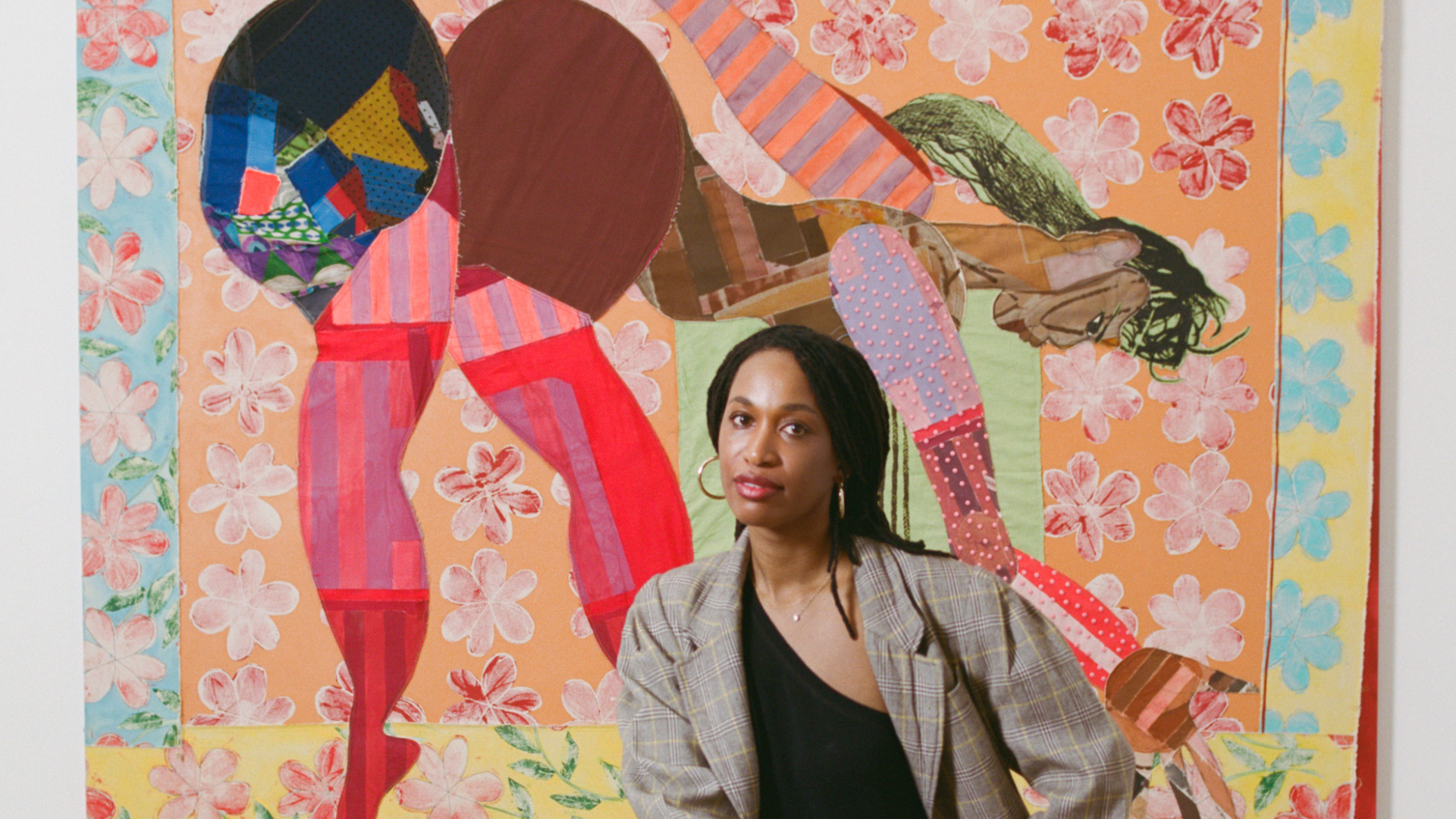
Atlanta, Georgia – the vibrant birthplace of trap music, a genre known for its gritty beats and streetwise lyrics is now home to a groundbreaking musical fusion that’s taking the world by storm. “Trap Jazz,” a revolutionary project blending the rhythms and themes of trap music with the melodies of jazz, is making waves, and it’s the subject of filmmaker Sadé Clacken Joseph‘s mesmerizing new documentary, now streaming on Hulu.
“I come from a music background and have a deep passion for artists. But also I was just really drawn by the movement itself and the idea of these brothers like trying to create their own genre and fulfill like their fathers in their families legacies and coming from church particularly that they’ve played a big part in my life,” Clacken Joseph tells ESSENCE.

Clacken Joseph, who’s also widely known for her direction behind Max and Issa Rae’s Rap Shit, she feels a deep connection to music driven narratives, especially for Black people. “I also grew up playing piano in church, so I just felt very connected to the story personally,” she said of Trap Jazz. “I get really passionate about the idea of using music to heal and people trying to make it in music in this day and age, and what comes what comes with being an artist and what it takes to find your voice. I was just really drawn to this project for those reasons, and also just how much these guys loved where they’re from, as well and how Atlanta played a role.”
A collection of interviews with several of Atlanta’s iconic rap legends sound off on the core components of trap music and the city’s vibrant culture. Superstar producer Zaytoven, Rappers T.I., and Big Boi of Outkast are among those who make cameos. In the documentary, T.I. says, “There’s a lot of confidence that comes from the culture of the city. We’re defiant, disruptive, and passionate.” From the 1995 Source Awards where Andre 3000 infamously said “the South got something to say,” it ignited the fire that would shape Atlanta’s sound for generations to come.
Fast-forward to the present day, and trap jazz emerged at the epicenter of Atlanta. At its core, trap jazz is the product of the deep-rooted friendship and musical odyssey of three childhood friends: Chris Moten, Cassius Jay, and Devon “Stixx” Taylor. As kids growing up in Atlanta, they each gravitated toward different musical instruments—Moten to the piano, Jay to the organ, and Taylor living up to his nickname as a drummer from a very young age.
While individually successful in their musical careers, with Jay becoming a sought-after trap music producer working with the likes of the Migos and Future and Taylor serving as Justin Bieber’s drummer, Moten envisioned something deeply personal and unique. It wasn’t about being sidemen or producers for others; it was about exploring their own distinct sound as both friends and musicians. Thus, trap jazz was born.
The documentary is divided into three chapters – “Our Father,” “Old Meets New,” and “Legacy” – with “Creating a Genre” as a prelude. Moten, in his home studio, describes Trap Jazz as “eclectic improvisation mixed with street gutter sounds.” The familiar melodies and breaks of jazz are seamlessly blended with the skittering hi-hats, delay effects, and drum machine triggers of trap music, a genre that originated in Atlanta and later influenced chart-topping artists like Drake, Cardi B, and Ariana Grande.
“When you think of trap and jazz people think of it as two opposing things trying to be brought together but it’s not so much about the dichotomy. It’s about the similarities and how actually, across Black music, how we’ve been able to preserve and how ancestral it is,” Clacken Joseph explained. “And how there’s still lots of similarities between the music and the rhythms and the West African traditions that have been passed on for centuries. I think this shows a beautiful harmony with the evolution of our music, but also how it always kind of ties back to the same place, and how it’s like rooted in the same things.”
What sets Trap Jazz apart from other musical documentaries is its emphasis on the profound role of the church and church music in the lives of the trio. Taylor, raised in his pastor father’s church, shares how the church was where he and his friends honed their musical talents and formed their tight-knit bond.
Throughout the documentary, reenactments transport us to the past, showing Moten and Jay immersed in radio and 1980s keyboard technology during their adolescence. Their journey becomes a legacy, a way of paying homage to their roots while foreshadowing the stamp they would leave on the music of the future. The documentary also comes at a key time, as the nation celebrates the 50th anniversary of hip-hop as a genre. “I think it was exciting to like reposition Atlanta on the map for its contributions, not just for trap, but OutKast, and T.I. and pay homage to like all the new genres that have come out of Atlanta, and making sure that that was still in the conversation as we talk about hip-hop, whereas, some might be more focused on New York or Atlanta, or Detroit.”
A defining moment in the documentary is when Moten, Jay, and Taylor seize the opportunity to perform their Trap Jazz versions of Quincy Jones’ music with the legendary musician himself in the room, showcasing the impact their unique fusion has had on the industry.
Interviews with Moten, Jay, and Taylor reveal them to be thoughtful, forthright, and unafraid to share their personal stories and struggles. The documentary also offers a glimpse into their enduring friendship, showcasing the dynamics of a trio who’ve known each other for a lifetime and how they navigate their personal relationships in a professional sense.
Trap Jazz doesn’t shy away from exploring the origins of trap music, even delving into its connection with strip clubs. Cassius Jay humorously explains, “Strippers play a real big role in trap music. Because without the strippers, the DJs wouldn’t even know about certain songs. If you can get a girl to shake their ass to the music, you got a hit.”
However, the most powerful chapter in the documentary is “Our Father.” It sheds light on the profound influence of their fathers, all of whom were ministers, on their musical journeys. Taylor’s father, captured in VHS footage, proudly watched his son play the drums from a young age. Jay pays tribute to his own father, who passed away unexpectedly and remained his biggest musical influence. Moten’s father, renowned in Atlanta for his expressive style as a COGIC organist, is also celebrated.
Moten’s journey is particularly touching as the documentary explores his complex relationship with his father, who spent time in prison. The inclusion of cassette recordings of Moten’s father offering musical advice to the boys adds depth to the narrative. It’s a poignant moment when Moten, after years of burying his emotions, plays alongside his father in a joyous impromptu jam session, bridging the gap between their shared love of music.
“I think every moment with Chris and his dad was just super emotional,” says Clacken Joseph. “We found out through filming about Chris’s dad, he had just gotten out of prison when we started filming, so that was just a shock in itself, but then learning that he literally taught him about a playthrough cassette tape and just going into that relationship and giving them space for that father and son to heal and talk about things for the first time in 20 years. That was very emotional to film and even watch after with them.”
Trap Jazz is more than just a music documentary; it’s a tribute to friendship, family, and the power of music to transcend boundaries. It’s a testament to the resilience and creativity of Atlanta’s musical heritage, where trap beats meet jazz melodies to create something truly groundbreaking. As Lala Hathaway aptly puts it, “Jazz, rhythm & blues, funk, fusion, hip-hop, trap; they are all an expression from the street, from people saying, ‘Here’s what we wanna put into this.'” In the case of Trap Jazz, what they put in is nothing short of a musical revolution.
You can stream ‘Trap Jazz’ on Hulu now.





